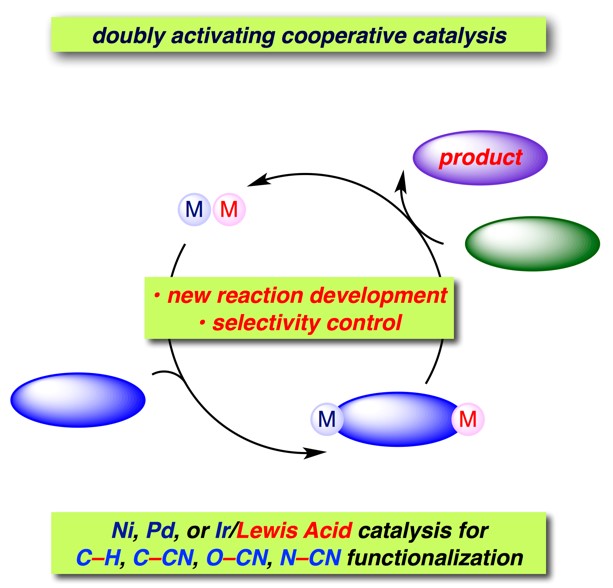Cooperative Metal Catalysis for Efficient Organic Synthesis
A number of useful C–C and C–heteroatom bond forming reactions have been developed by taking advantages of varied reaction modes of metal complexes. We have envisaged that the power of metal catalysis can be brought out further by designing cooperative catalysis derived from two or more different metal complexes. We show that some novel C–C and C–heteroatom bond forming reactions are enabled by doubly activating cooperative catalysis with late transition metals and Lewis acids. Examples include cyanofunctionalization,1–3 hydro(hetero)arylation,4 hydrocarbamoylation,5 and borylation6 reactions through C–CN, O–CN, N–CN, and C–H functionalization by nickel, palladium, or iridium/Lewis acid cooperative double activation catalysis.

1. Y. Nakao, Bull. Chem. Soc. Jpn. 2012, 85, 731. 2 D. C.Koester, M. Kobayashi, D. B. Werz, Y. Nakao, J. Am. Chem. Soc. 2012, 134, 6544. 3 Y. Miyazaki, N. Ohta, K. Semba, Y. Nakao, J. Am. Chem. Soc. 2014, 136, 3732. 4 S. Okumura, S. Tang, T. Saito, K. Semba, S. Sakaki, Y. Nakao, J. Am. Chem. Soc. 2016, 138, 14699. 5 Y. Miyazaki, Y. Yamada, Y. Nakao, T. Hiyama, Chem. Lett. 2012, 41, 298. 6 L. Yang, K. Semba, Y. Nakao, Angew. Chem. Int. Ed. 2017, 56, 4853.